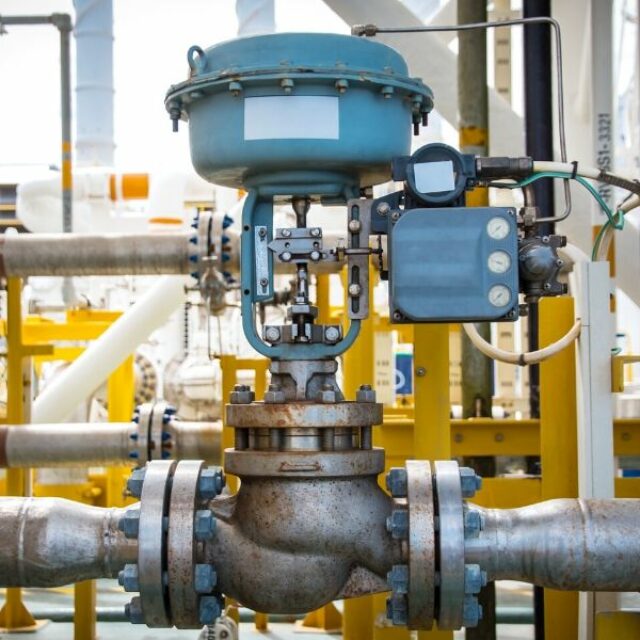How Control Valves Impact Power Efficiency in Industrial Settings
How Control Valves Impact Power Efficiency in Industrial Settings
Blog Article

Maximize Energy Financial Savings and Comfort With Advanced Structure Automation Controls
In the realm of contemporary design and facility monitoring, the combination of innovative structure automation regulates stands as a pivotal advancement. By harnessing the power of automation, buildings can adjust, respond, and evolve in methods that were once inconceivable.
Energy Efficiency Conveniences
Power performance advantages can substantially reduce energy intake and functional costs in structures. By carrying out energy-efficient methods and modern technologies, building proprietors and drivers can achieve significant savings while also contributing to environmental sustainability. Among the main benefits of boosting energy performance in structures is the reduction of utility costs. Energy-efficient systems, such as advanced structure automation controls, can maximize the use of sources like air conditioning, lights, and home heating, bring about lower energy expenses in time.
Additionally, enhanced power performance can extend the lifespan of structure devices and systems. By operating much more successfully, HVAC systems, lighting fixtures, and various other structure parts experience less wear and tear, resulting in reduced maintenance and substitute expenses. In addition, energy-efficient structures typically regulate higher building values and rental rates, giving long-term economic advantages to owners.
Moreover, energy effectiveness can boost passenger convenience and performance. Appropriately regulated interior atmospheres with optimum illumination and thermal conditions create an even more enjoyable and helpful work space, resulting in improved worker contentment and efficiency. In general, the energy performance advantages connected with advanced structure automation controls are multifaceted, incorporating expense savings, environmental stewardship, and passenger health.
Improved Comfort Control
Enhancing comfort control in building settings needs an innovative assimilation of innovative automation systems for ideal owner wellness. By using innovative structure automation controls, centers can tailor the indoor setting to meet the details needs and choices of owners. control valves.
Boosted comfort control goes past basic temperature level adjustments. It consists of attributes such as tailored setups, tenancy sensing units, and all-natural light usage to produce a vibrant and responsive setting. By integrating these innovative controls, structures can not only improve comfort but likewise improve energy effectiveness by optimizing system procedures based upon real tenancy and usage patterns. Inevitably, focusing on occupant convenience via sophisticated automation systems causes an extra satisfying and healthier indoor atmosphere.
Operational Efficiency Improvements

Furthermore, the implementation of real-time surveillance and analytics tools enables structure operators to identify energy inadequacies and functional anomalies quickly. By continuously keeping an eye on power use patterns and system efficiency metrics, changes can be made in real-time to enhance power intake and make certain peak operational efficiency. control valves. Furthermore, integrating need feedback methods right into building automation controls can better boost operational efficiency by dynamically adjusting power use based on grid conditions and pricing signals
Indoor Climate Optimization
Reliable indoor climate optimization is a basic element of structure automation controls, ensuring residents' comfort and health while making the most of energy financial savings. By utilizing advanced sensors and controls, building automation systems can constantly readjust and monitor temperature, humidity levels, air top quality, and ventilation to develop an ideal interior atmosphere. Maintaining consistent and comfy problems not only improves resident contentment however additionally increases performance and total well-being.
Indoor climate optimization likewise plays an important function in power performance. By fine-tuning ventilation, air conditioning, and home heating systems based upon real-time information and occupancy patterns, building automation controls can internet significantly reduce power usage - control valves. For example, implementing strategies such as demand-controlled air flow and thermal zoning can assist minimize energy waste while ensuring that each area of the structure receives the essential conditioning.

Lasting Environment Development
Building automation regulates not only maximize indoor climate conditions for power performance and occupant comfort but also lay the structure for producing a sustainable setting through strategic management of systems and sources. By incorporating advanced building automation technologies, such as sensing units, actuators, and smart software program, centers can keep an eye on and adjust power usage in real-time to decrease waste and lower their carbon footprint. These systems allow predictive maintenance, determining possible problems before they intensify and maximizing devices efficiency to improve longevity and effectiveness.
Additionally, sustainable atmosphere production extends past energy monitoring to incorporate water preservation, waste reduction, and interior air high quality improvement. Structure automation controls can regulate water use, find leakages, and make certain proper garbage disposal techniques, adding to total sustainability efforts. In addition, by managing and keeping an eye on air flow and filtering systems, these innovations improve passenger health and wellness and productivity while decreasing energy intake linked with heating and cooling operations.
Verdict
In conclusion, progressed building automation controls offer considerable advantages in terms of power cost savings, convenience control, operational effectiveness, indoor climate optimization, and creating a sustainable setting. By carrying out these controls, structures can attain optimum efficiency while lowering energy intake and enhancing passenger comfort. It is apparent that making use of innovative automation technology is vital in boosting structure efficiency and producing a more sustainable future.
Energy efficiency benefits can substantially minimize energy usage and functional prices in structures. On the whole, the power efficiency benefits connected with sophisticated structure automation click here to find out more controls are diverse, including cost savings, environmental stewardship, and passenger wellness.
Additionally, incorporating need response techniques into building automation controls can better boost operational efficiency by dynamically changing energy usage based on grid problems and prices signals.
Building automation regulates not only enhance indoor environment conditions for energy performance and passenger comfort yet likewise lay the foundation for developing a sustainable environment through navigate to this site strategic monitoring of systems and resources.In verdict, advanced structure automation controls offer considerable advantages in terms of energy financial savings, convenience control, operational performance, indoor environment optimization, and producing a lasting atmosphere.
Report this page